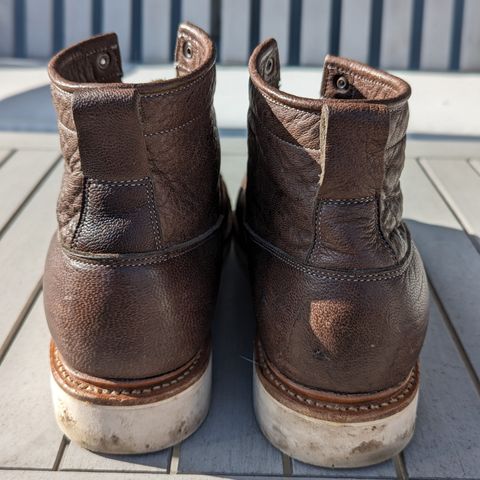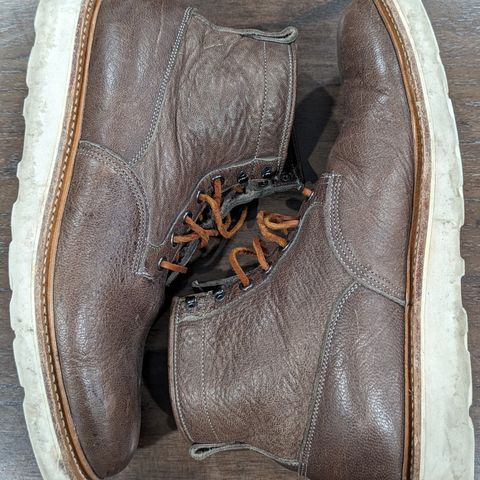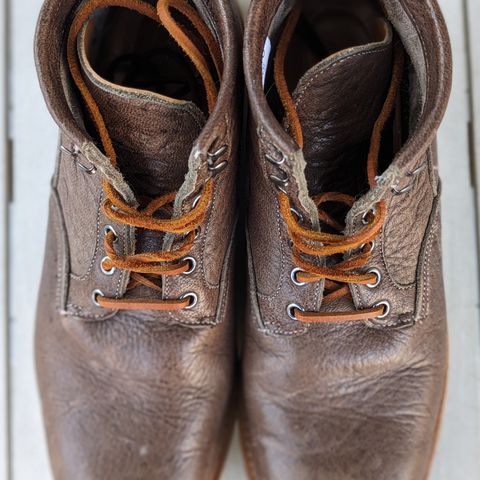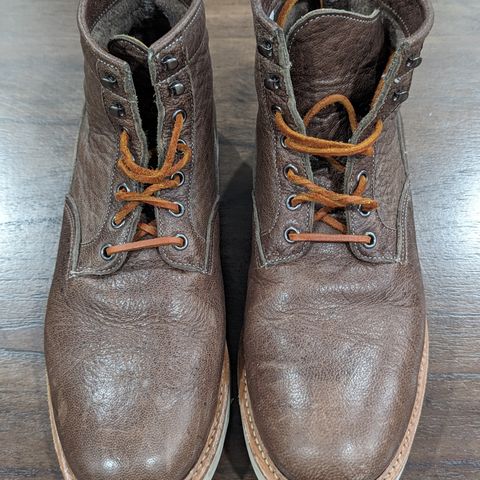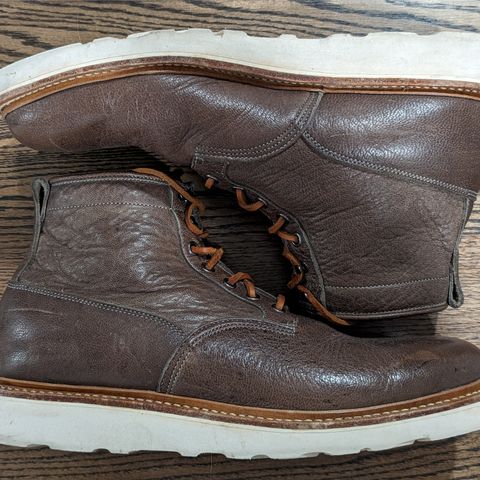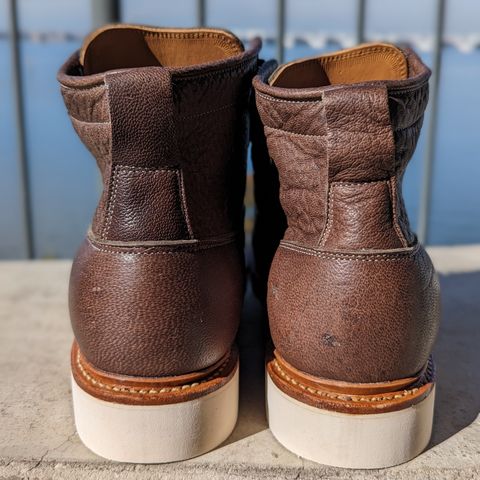About
C.F. Stead Waxed Veldt is a wax-impregnated wild antelope leather produced by Charles F. Stead, a British tannery established around 1900. The leather uses skins sourced from annual wild antelope culls in African communities, with each hide measuring 15 to 17 square feet and ranging from 2.2 to 2.4 millimeters in thickness. The material combines softness with strength through a specialized veldt tannage process, followed by full wax or blended wax-and-oil treatments. Natural blemishes, cuts, and scars from the animals' environment are intentionally preserved as distinctive features rather than concealed.
About
C.F. Stead Waxed Veldt is a wax-impregnated wild antelope leather produced by Charles F. Stead, a British tannery established around 1900. The leather uses skins sourced from annual wild antelope culls in African communities, with each hide measuring 15 to 17 square feet and ranging from 2.2 to 2.4 millimeters in thickness. The material combines softness with strength through a specialized veldt tannage process, followed by full wax or blended wax-and-oil treatments. Natural blemishes, cuts, and scars from the animals' environment are intentionally preserved as distinctive features rather than concealed.
The tannery developed Waxed Veldt for customers seeking alternatives to conventional trends in leather production. The company began working with antelope skins in the 2000s, starting with kudu, and has since expanded its wild animal leather offerings. Traditional practices typically covered wild animal leathers in heavy pigments to hide natural imperfections, but the veldt tannage emphasizes the raw material's inherent character.
Material and Sourcing
The hides for Waxed Veldt are collected during annual wild antelope culls conducted in various African communities. Charles F. Stead works closely with people in several African countries to obtain these skins through established sourcing relationships. The wild origin of the animals results in significant variations between individual hides, with no two skins exhibiting identical characteristics.
Each skin retains natural markings acquired during the animal's life in the bush. Environmental scars, cuts, and blemishes that would traditionally be viewed as defects are instead highlighted as authenticating features. The company's approach values these imperfections as evidence of the leather's genuine wild animal origin. Average hide size ranges from 15 to 17 square feet, with thickness specifications between 2.2 and 2.4 millimeters providing consistent material properties for footwear construction.
Physical Characteristics
Waxed Veldt exhibits a naturally textured surface resulting from the veldt tannage process combined with the wild antelope's original grain structure. The Fog colorway presents a rich dark grey appearance that emphasizes the leather's natural texture. The material demonstrates both softness and structural strength, characteristics attributed to the combination of the wild antelope hide's inherent properties and the specialized tanning treatment.
The leather's texture and handle distinguish it from domestically raised animal leathers and from other wild antelope preparations. The grain surface retains its natural variations, with individual hides displaying unique patterns of scarring and environmental marking. These natural characteristics contribute to visual and tactile properties that vary significantly between production runs and individual hide sections.
Tanning and Treatment
The veldt tannage process provides the leather's distinctive texture and physical properties. All Waxed Veldt leather receives aniline dyeing without pigment application, allowing the natural grain characteristics to remain visible. This approach contrasts with traditional finishing methods that apply heavy pigment layers to create uniform surface appearances.
Following the base tannage, Charles F. Stead treats the leather with either full wax impregnation or a blended application of waxes and oils. The full wax treatment follows techniques similar to those used for the company's other waxed antelope leather products. This finishing stage enhances the leather's water resistance while contributing to its characteristic surface appearance and tactile qualities.
The manufacturing process intentionally emphasizes the naturalness of the raw materials rather than pursuing surface uniformity. This production philosophy positions Waxed Veldt within a category of leathers that prioritize authentic characteristics over standardized appearances.
Applications
Viberg, a Canadian bootmaker, incorporates Waxed Veldt in both Scout Boot and Hiker boot models. The company pairs the leather with its 2030 last construction, Goodyear welt attachment methods, and Vibram Morflex sole units. These boots feature gunmetal hardware and eyelets as complementary components to the dark grey Fog colorway leather.
The leather's combination of thickness, flexibility, and durability characteristics makes it suitable for boot uppers requiring both structural stability and break-in adaptability. Manufacturers working with the material must account for the natural variations between hides when pattern cutting and lasting operations are performed.
References
"Waxed Veldt". Charles F. Stead. Retrieved September 30, 2025.
"Waxed Kudu". Charles F. Stead. Retrieved September 30, 2025.
"Hiker - Fog Waxed Veldt". Viberg. Retrieved September 30, 2025.
"Heritage". Charles F. Stead. Retrieved September 30, 2025.
"C.F. Stead Leather". The Tannery Row. Retrieved September 30, 2025.
